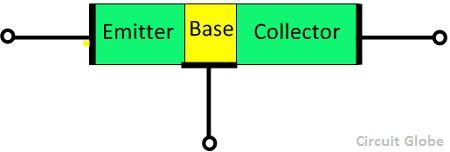

The next plot clarifies the relationship between collector current and forward bias of the BC junction. This is when the transistor enters saturation: though V IN (and consequently I B) continues to increase, the collector current is almost constant. Then, at V IN ≈ 1.05 V, the collector current reaches the point at which the voltage dropped across R C is large enough to move the BC junction into the forward-bias region. After that, the transistor is in forward active mode, and collector current increases rapidly. The collector current is extremely small until V IN reaches approximately 0.6 V. This behavior is shown in the following plot.Īs you can see, V IN is increasing from 0 to 1.6 V. However, when the transistor enters saturation, the collector current essentially levels out: we can continue to raise V IN, but this will result in only very small increases in collector current. In forward active mode, increases in base current create increases in collector current according to the relationship I C = βI B. In cutoff mode, the transistor is inactive current cannot flow from collector to emitter. This is called the collector-to-emitter (V CE) saturation voltage: V CE(sat) = 0.2 V. The BC junction enters the forward-bias region when the base-to-collector voltage is about 0.5 V since the base-to-emitter voltage stays near 0.7 V and the emitter is grounded, a bit of math tells us that the voltage at the collector will be 0.2 V. When both the BE junction and the BC junction are forward-biased, the transistor is in saturation mode. Eventually, the collector resistor R C will drop so much voltage that the BC junction will begin to enter the forward-bias region. It’s true that some voltage is dropped across the resistor R C, and consequently, the voltage at the collector is lower than 5 V, but we’ll assume that the collector resistance and the initial collector current are small enough to maintain conditions of reverse-bias for the BC junction.Īs V IN increases, the base current increases and therefore so does the collector current.

The BJT is in forward active mode because the supply voltage connected to the collector through R C is much higher than V IN, and this ensures that the base-to-collector (BC) junction is reverse-biased. The base current I B, which is limited by the base resistor R B, determines the collector current: I C = βI B. When V IN is approximately 0.6 V, the BE junction begins to conduct.

Thus, the transistor is in the nonfunctional mode called cutoff, and it will remain in this mode until the base voltage is high enough to forward-bias the BE junction. No significant amount of current flows into the base, and consequently no significant amount of current flows from collector to emitter. If V IN is connected to ground, the base-to-emitter (BE) junction is not forward-biased. Let’s imagine that we’re working with the simple BJT circuit shown below. We’ll start with the three most common operational modes, and then we’ll look at some plots that will help us to understand the relationships between BJT currents and voltages. This is a good place to start, but you’ll need to know quite a bit more if your goal is to analyze or design BJT-based circuits. The previous tutorial provided a low-level explanation of how a BJT functions when it is in the forward active mode.


 0 kommentar(er)
0 kommentar(er)
